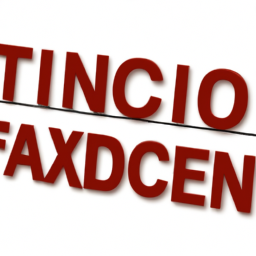
Tax-Efficient Investing: Maximizing Returns while Minimizing Taxes
Introduction
Investing in the stock market can be a profitable venture, but it’s important to consider the impact of taxes on your investment returns. Tax-efficient investing is a strategy that aims to maximize your after-tax returns by minimizing the amount of taxes you pay on your investments. In this article, we will explore some effective strategies to help you optimize your investments while minimizing your tax liability.
1. Utilize Tax-Advantaged Accounts
One of the most effective ways to minimize taxes on your investments is to take advantage of tax-advantaged accounts such as Individual Retirement Accounts (IRAs) or 401(k) plans. Contributions to these accounts are often tax-deductible, and the growth of your investments within these accounts is tax-deferred until withdrawal. By utilizing these accounts, you can significantly reduce the amount of taxes you owe on your investment gains.
2. Consider Long-Term Investments
Investing for the long-term can have significant tax advantages. When you hold an investment for more than a year, any gains from the sale of that investment are considered long-term capital gains, which are taxed at a lower rate compared to short-term capital gains. By adopting a long-term investment strategy, you can reduce your tax liability and potentially increase your after-tax returns.
3. Tax-Loss Harvesting
Tax-loss harvesting is a strategy that involves selling investments that have experienced a loss to offset capital gains. By realizing losses, you can reduce your taxable income and potentially lower your overall tax liability. It’s important to note that tax-loss harvesting should be done strategically to avoid violating the IRS wash-sale rule, which prohibits repurchasing a “substantially identical” investment within 30 days of the sale.
4. Minimize Portfolio Turnover
Portfolio turnover refers to the frequency with which investments are bought and sold within a portfolio. High portfolio turnover can lead to increased tax liabilities due to capital gains taxes. By adopting a buy-and-hold strategy and minimizing unnecessary trading, you can reduce the number of taxable events in your portfolio and potentially lower your tax bill.
5. Asset Location Optimization
Asset location optimization involves strategically placing investments in different types of accounts to minimize taxes. Generally, investments that generate regular income, such as bonds or high-dividend stocks, are better suited for tax-advantaged accounts, while investments with long-term growth potential, such as stocks, can be held in taxable accounts. By allocating your investments strategically, you can minimize the amount of taxes you owe on your overall portfolio.
6. Be Mindful of Dividends
Dividends received from investments are subject to taxes. If possible, consider reinvesting dividends rather than taking them as cash. By reinvesting dividends, you can avoid immediate tax liabilities and allow your investments to compound over time.
Conclusion
Tax-efficient investing is a crucial aspect of maximizing your investment returns. By utilizing tax-advantaged accounts, considering long-term investments, implementing tax-loss harvesting, minimizing portfolio turnover, optimizing asset location, and being mindful of dividends, you can effectively minimize your tax liabilities and increase your after-tax returns. It’s important to consult with a tax professional or financial advisor to determine the best tax-efficient strategies for your specific financial situation.